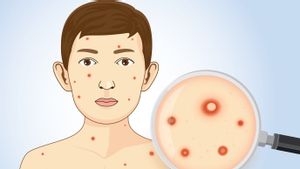YOGYAKARTA Some people think that gondongan disease is not contagious. In fact, gondonggan disease can be transmitted to others. The method of transmission of gondongan disease is quite easy, if you are not aware of this disease, it can be transmitted to you or people around you.
Reporting from AI Care, gondongan is the swelling of the saliva gland (parotics) caused by viral infection (mumps). In the medical world gondonggan is known as parotitis. When a person is exposed to paritis, the saliva glands near the ear will swell.
Basically gongonggan can be contagious like colds and flu. The spread of the virus that causes gondonggan can be through saliva splashes or droplets that come out when you have cough gononggan, sneezing, or depending on it.
Even droplets with gongongan can be transmitted through mucus that comes out of the nose or saliva from the mouth when the person is talking.
Reporting from the official website of the Ministry of Health, here are how the online virus spreads to other sufferers.
SEE ALSO:
Gondongan sufferers must realize that the illness can be prevented in several ways, namely as follows.
It should be noted that people with gongonggan sometimes do not experience specific symptoms. However, the easiest symptoms when a person is exposed to inflammation is the swelling of the saliva gland which simultaneously makes the neck area swell so that sufferers need to know how to attach gongonggan. Not only that, here are other symptoms of gongonggan.
Gondongan can recover on its own in line with the increase in the immune system of the sufferer. Usually gondogan will disappear within 1 to 2 weeks. Here's how to deal with the gap faster.
That's information regarding how to transmit gondongan disease. Visit VOI.id to get other interesting information.
The English, Chinese, Japanese, Arabic, and French versions are automatically generated by the AI. So there may still be inaccuracies in translating, please always see Indonesian as our main language. (system supported by DigitalSiber.id)
















